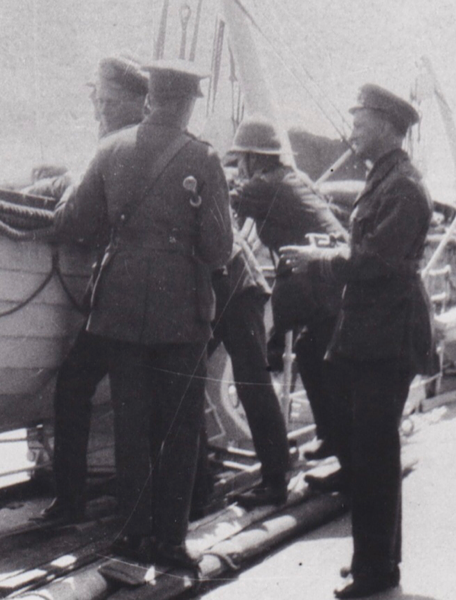January 1915 ... Malta, Greece & Egypt
| On January 1st, the Nelson Battalion was transferred to the 1st Brigade to balance the strength between the Naval brigades. Deal would also be transferred to the Brigade in mid-March. The Royal Naval Division, less Hawke, Collingwood, Benbow, and one company of field engineers, was concentrated at Blandford by the twenty-eighth, the troops from Antwerp having been reinforced and reorganised. The Division was due to enter a period of divisional training, but on the twenty-ninth the Plymouth and Chatham Battalions were ordered overseas. Three days later, the two battalions were moved to Plymouth and sailed for an unknown destination on February 6th. On the seventeenth, the remainder of the Division at Blandford was inspected by Winston Churchill, and the following day was ordered to join the two Marine battalions. One week later, the Division was again inspected by Winston Churchill and, later in the day, by King George V. | ||||||||||||||||||||||||||||||||||||||||||||||||||||||||||||||||||||||
|
Thomas was promoted to the rank of Able Seaman on the twenty-eighth, and later that day the Royal Naval Division sailed from Avonmouth. The Division was assigned to become part of the Mediterranean Expeditionary Force's Gallipoli campaign. The MEF was to face the troops of the Ottoman Empire in an attempt to create a new front on which the war would be fought, in addition to opening the key supply route through the Black Sea to Russia. The Ottoman Empire controlled the Dardanelles Straits at the entrance to the Black Sea. It was considered that the Turkish army was comprised of second-rate troops and that advances would be relatively straightforward compared to the stalemate that had developed in the trenches of the Western Front.
The Royal Navy commenced its assault on the forts guarding the Dardanelles Straits, and on March 3rd the Plymouth Battalion attempted landings on the Peninsula with the objective of holding a two-mile line whilst the defensive positions were reconnoitred for bombardment. The battalion landed with relative ease but was unable to progress inland. The attempt was abandoned, and the Marines made their way back to the ships. Stopping over at Malta, the Division in transit arrived at Lemnos on the twelfth, where landing operations were rehearsed. Shortly after the arrival of the Division, the MEF's Commander-in-Chief, Sir Ian Hamilton, and his divisional generals departed aboard HMS Phaeton to observe the operations at Gallipoli. On the eighteenth, the Division was moved on the transports to the western shore of the Peninsula. At the entrance to the Straits, five British battleships were bombarding the forts. It was intended that the Division would land to create a diversion for the attack, but it was eventually ordered back to Lemnos as the naval attack had failed. |
 |
|||||||||||||||||||||||||||||||||||||||||||||||||||||||||||||||||||||
The establishment of the Royal Naval Division as stated in March/April 1915:
|
||||||||||||||||||||||||||||||||||||||||||||||||||||||||||||||||||||||
 |
The Division was ordered to Port Said on the twenty-second, and once in Egypt the Division took on supplies and the men were rearranged between the ships to enable quick disembarkation during the landings. On April 1st, the Division was ordered to send a detachment to the Suez Canal defences at El Kantara. Portions of the Drake, Nelson, Howe, and Anson Battalions undertook this role, and on the third the Division was inspected by Sir Ian Hamilton at Port Said. Two days later, the Division began embarking stores, and the Anson Battalion was ordered to Alexandria as the beach party for the 29th Division, which was disembarking in readiness for the upcoming attacks.
On the eighth, the first of the transports containing the Chatham, Portsmouth, Howe, and Hood Battalions left Port Said for Mudros. Deal and Nelson embarked once the Division’s final tasks in Egypt were complete. The Division rendezvoused at Scyros on the sixteenth and resumed rehearsing the landing operations. On the twentieth, Benjamin Bashton, Thomas' elder brother, was reported missing in action, presumed killed while serving as a private with the Northumberland Fusiliers on the Western Front in the Ypres salient. |
|||||||||||||||||||||||||||||||||||||||||||||||||||||||||||||||||||||
|
||||||||||||||||||||||||||||||||||||||||||||||||||||||||||||||||||||||